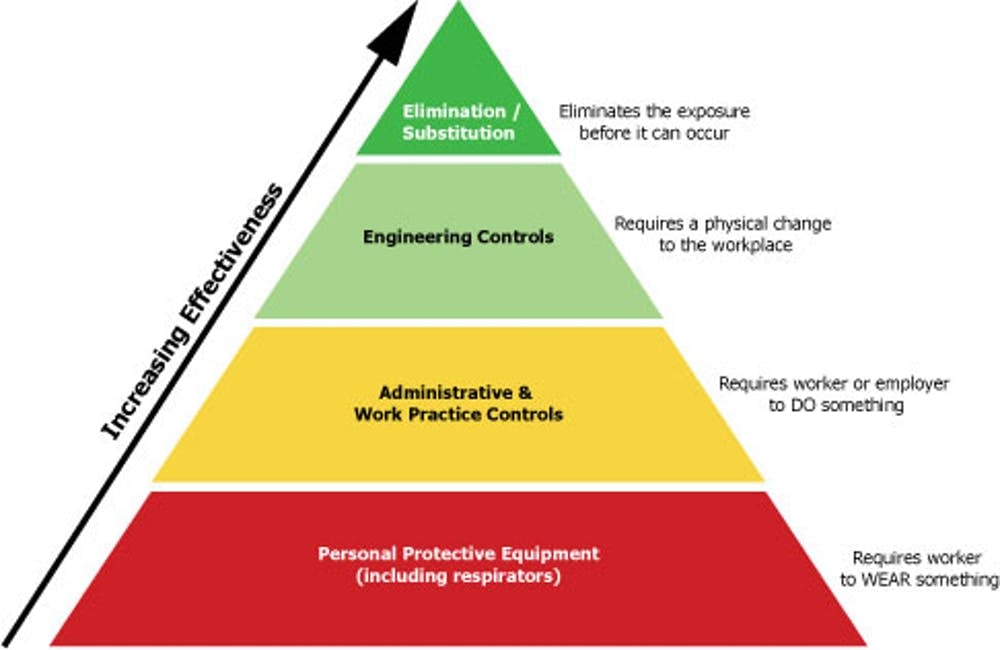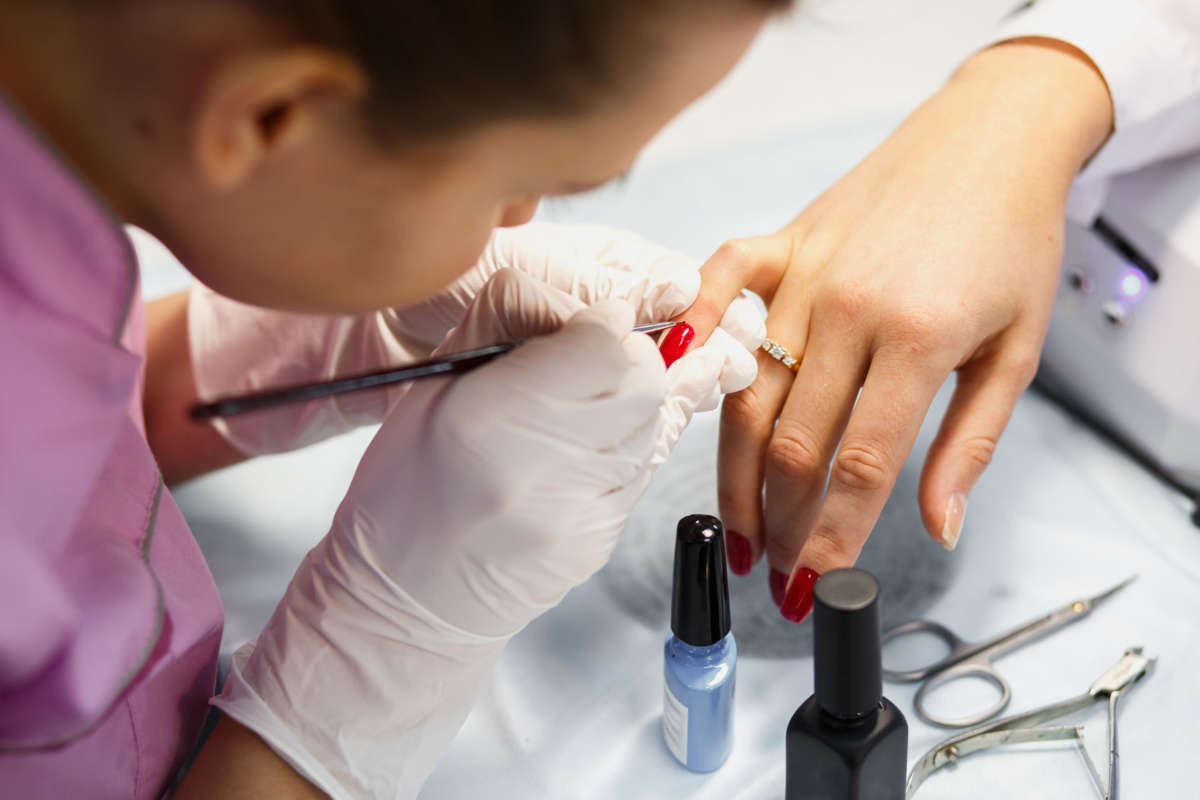Honest, paywall-free news is rare. Please support our boldly independent journalism with a donation of any size.
Anyone who has walked past a nail salon is familiar with the noxious odors that emanate from acrylic nails, polishes and removers. Customers getting manicures and pedicures endure the smell temporarily, but manicurists who inhale these evaporating chemicals for hours expose themselves to health risks.
The smells come from volatile organic compounds, or VOCs – compounds that easily become vapors or gases. These substances have been linked to health problems ranging from headaches and respiratory irritation to reproductive complications and cancer. In a normal room-temperature environment, VOCs evaporate and humans breathe them in.
Our research team, along with colleagues at Colorado State University, recently investigated chemical exposures in six Colorado nail salons and found that employees spent their days exposed to high levels of VOCs. Participating technicians, who had worked in salons for up to 19 years, reported suffering headaches and skin and eye irritation.
We measured levels of benzene and formaldehyde in the salons, and determined that exposure to these known human carcinogens was increasing the workers’ lifetime cancer risks above one in one million – the level that many U.S. agencies consider acceptable in regulating exposure to harmful substances.
Identifying Health Hazards
A 2015 New York Times exposé highlighted underpayment and poor working conditions in New York nail salons. However, it failed to address chemical exposures that salon workers experience daily.
Several research groups have sought to characterize and quantify VOC exposures in the nail salon environment, using standard measurement techniques and self-reported health surveys. Their research shows that nail salon workers are exposed to higher levels of VOCs than they would typically be expected to encounter in most homes, occupations or urban environments. As a result, these workers frequently experience work-related health symptoms.
Our study measured 10 VOCs, including the carcinogens benzene and formaldehyde. We found that VOC levels in the six salons where we monitored regularly exceeded common threshold levels for odor and inhalation risk. In some cases this posed a significant risk of cancer over a 20-year exposure period.
Twenty workers answered questionnaires about their personal health. Among them, 70% reported some form of short-term health symptom related to their employment, while 40% reported multiple related symptoms.
We worked closely with salon owners to enlist volunteer nail technicians to participate. Having owners’ support was instrumental, since it allowed salon workers to accurately report on their health and working conditions without fear of reprisal.
Workers have participated in making groundbreaking policy change such as passing the SF #HealthyNailSalon Program Ordinance #EFCSRchat
— CA Healthy Nail Salon Collaborative (@CA_HNSC) March 12, 2013
Like Working at an Oil Refinery
Many people view cosmetology as a relatively safe profession, but it isn’t. We found that exposures to aromatic hydrocarbons like benzene, toluene, ethylbenzene and xylenes – collectively referred to as BTEX – resembled those previously reported in studies of oil refinery workers and auto garage technicians.
Our results aren’t unique. A 2018 Iranian study found similar concentrations of benzene, ethylbenzene, and xylene in Tehran beauty salons. Another study conducted that year in Michigan found concentrations of toluene at over 100 parts per billion, which is roughly 30 times higher than reported urban outdoor levels.
Regulation of this kind of workplace exposure has not kept pace with science. Many U.S. occupational safety and health exposure limits have not been updated for nearly 50 years. The U.S. Occupational Safety and Health Administration, or OSHA, readily acknowledges that many of its permissible exposure limits are “outdated and inadequate for ensuring protection of worker health.”
OSHA offers only guidance and recommendations for businesses, effectively shifting the burden of worker protection onto private industry. This is especially problematic in the nail salon industry, where over 90% of salons are small businesses that employ fewer than 5 people and do not have safety personnel on staff.
Inadequate cosmetic product regulations and labeling requirements make it hard to know which products are actually safe. A 2012 study by the California Environmental Protection Agency found that 10 out of 12 nail products labeled “toluene free” still contained up to 17% toluene. Products labeled free of the so-called “toxic three” ingredients – dibutyl phthalate or DBP, toluene and formaldehyde – actually contained greater concentrations of DBP, an endocrine-disrupting compound, than products that made no claims at all.
Solving the Problem

Owners often work in nail salons, so they generally support efforts to improve air quality inside their businesses. Those who we interviewed typically had some understanding of the problem and wanted to fix it, but didn’t always know how.
The U.S. Environmental Protection Agency, the National Institute for Occupational Safety and Health and OSHA all publish healthy nail salon guides. Yet owners in our study had never heard of them – perhaps because the guides are only published in English, while many nail salon workers are Asian and Latino immigrants with limited English language skills.
Several grassroots community organizations have published guides to improving salons’ air quality in both Vietnamese and Chinese. These references discuss ventilation and use of personal protective equipment, which are paramount for mitigating chemical exposures in the workplace.
Small changes, such as running ventilation continuously, wearing nitrile gloves and utilizing proper charcoal face masks, can significantly reduce worker exposure. Results from our most recent study also suggest that placing large activated carbon sinks in salons could effectively remove VOCs from the air. We are currently experimenting with embedding these chemical-absorbing materials into pieces of art that can hang on salon walls.
Another priority is conveying information to larger audiences and advocating for more safety training in cosmetology certification programs. Education and training are particularly important for ethnic minority groups.
Many workplace standards enforced by OSHA, such as those regulating exposure to toxic and hazardous substances, apply to nail salons. However, cosmetic manufacturers are not required to obtain federal approval for products or ingredients before they go on the market, or to file product information with the agency.
In contrast, California passed a bill in 2018 that will require manufacturers to provide ingredient labels on any professional cosmetic products manufactured after July 1, 2020 and sold in the state. The campaign for this common-sense reform was largely led by advocacy groups like the California Healthy Nail Salon Collaborative. Practical steps like this can improve conditions for workers who receive little attention but are exposed to serious health risks on the job every day.
Media that fights fascism
Truthout is funded almost entirely by readers — that’s why we can speak truth to power and cut against the mainstream narrative. But independent journalists at Truthout face mounting political repression under Trump.
We rely on your support to survive McCarthyist censorship. Please make a tax-deductible one-time or monthly donation.
